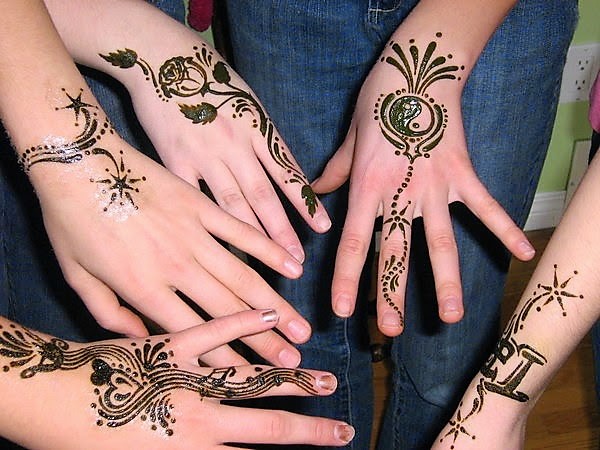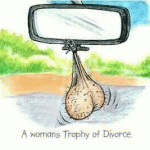An etymological introduction is vital to understand the importance of the multi-purpose dye since prehistoric times.
Henna is an ancient extension of the primary root *ḤN that belongs to the linguistic cluster ✤*ḤN⇆*NḤ. The main meanings of the root are best explained by consulting some of its trilateral extensions including:
1- ḤNa: twist, curl, bend, curve into the shape of a crook, move a muscle, bend a joint, bow, incline, etc.
These are essentially descriptive of body movements influenced by deep sad emotional pressure on one side, and body movements while dancing joyfully on the other.
No contradiction here.
As a noun/adjective, the word has the following meanings: affectionate; showing fondness for somebody; loving; tender; devoted; caring; feeling sympathy for people who are suffering; of a friendly, generous, benevolent, or gentle nature, or showing friendliness, affection, etc.; expressing sympathy to somebody; having a warm heart; kind; friendly; commiseration; compassion; kindness; mercy; tenderness; warm-heartedness, etc.
2- ḤNṭ: embalm; mummify;
3- ḤNṭa: a primitive kind of wheat, a cereal plant bearing dense four-sided seed-spikes;
4- ḤNṭi: light yellowish brown colour similar to the hard wheat of Arabia, or to the colour of sand. This may be useful to distinguish the original Henna used.
Two semi-critical suffixed extensions (letter+root) are these:
1- ṭ+ḤN (ṭaḥan): crush or pound something into powder, such as flower or henna.
2- L+ḤN (laḥn): a soft, repetitive type of singing, music, melody, composing music or music to accompany songs; to talk under emotional duress missing words or letters or intelligibly at times.
The importance of these two words rests on the possible fact that people powdered Henna before using the same method to crush wheat when it became available. The slow, deep and sad singing appears to have originated from cases that also involved the use of Henna.
For the most part of their history, our ancestors lived in an environment in which animals didn’t bury their dead so they followed suit.
In the overwhelming number of cases they could identify the state of death. A man or a child may have been savaged by a lion. They could see the marks of death on the mauled body parts and the blood. Some may have fallen on rocks and died. The tribe can be certain of death by inspecting the broken skull or bones and the motionless cold body.
They also knew many cases of fainting or lapsing for a certain time. These were either treated to regain consciousness, or made comfortable and people waited on them until they regained consciousness.
The cases they couldn’t understand were those of deep unconsciousness or comatoseness for no visible marks or causes
The comatose would have some signs of life but not all. They can breathe but they can’t talk or eat. The reasons are many. They could have victims of snake bites or scorpion stings. Other reasons include poisonous plants the comatose could have touch or eaten. A number of such plants are named in various sources.
The worry of the close relatives is immense particularly in the case of children. Mums were devastated because they don’t know what’s the problem so they helpless. Sometimes mums may lose all hope and weep. In other times they may notice body movements or some signs of improvement and they would be joyful.
In some cases the mum would be joined by relatives and friends. Signs of recovery may send all of them clapping and laughing. An hour later the comatose may suffer seizures and muscle tremors. Panic would immediately set in and they may cry in unison.
The stings of certain scorpions can make children unconscious for about a month. Some would recover after that, others wouldn’t.
Comatose cases can last months or years. To help, two things were done:
5- Group crying interrupted by imploring the comatose to come back to them. They may tell them how much they are missed or needed or loved. Some may become very emotional and their bodies may start to sway in sadness or sympathy;
6- Group singing and dancing in the hope it would help the comatose to regain consciousness and resume his life.
In the case of comatose men, the wives would put on the best dresses they have, wear the best perfume they can find, and decorate their bodies with henna and other dyes.
Henna is derived from the root*ḤN and it can be presumed to have been used specifically in such cases. We even have the type of smell the original Henna had. An adjective from the same root describes the smell as similar to that of rotten walnuts or nuts in general.
However other types were used for body decoration including the yellow type of the daisy-like camomile. The name extant in Arabic for camomile is “Uqḥuwan”. The root appears to be the third and last letter producing an ancient trilaterals like qḤN. However it could be a Nucleitic Compound made of two roots: AQ/ḤN. If that’s the case the word would 2,000+ years older than qḤN.
The greatest party would be when the comatose regains full consciousness. Nights of endless sex may be waiting for him, and the party goes on for a long time with girls and women looking like actresses in Indian wedding movies.
In other cases the comatose dies. The time of *ḤN is over and the time of reverse root *NḤ from the same linguistic cluster begin:
*NḤ (NaḤ): cry; lament; wail; mourn; blubbering, etc.
The wife or mum would tear her dress and smear her face with soot. Grief lasts for 40 days. We don’t exactly why but it may have to do with making certain the wife isn’t pregnant. The same number of days applies to “quarantine”, from an Italian word that means “forty”.
But let’s be clear: if people could count to forty it couldn’t be in the Stone Age. Only number one is a prehistoric bilateral root. The higher numbers are all extensions.
One of the extensions above is this: “ḤNṭ: embalm; mummify”.
Embalming is a major topic that will be covered in a coming post.
Let’s end up with a happy note:
The origin of the use of Henna is as described here. On bereavement, some women tear their dresses and smear their faces with sot to these days.
The wider use of henna is for weddings. The fact that Henna is heavily used in the Indian subcontinent may point to an ancient cultural stretch from Mauritania to the borders of China that includes many customs, costumes, linguistic integration, history and an amazing similarity of body language.
Some girls may go to extremes preparing themselves for wedding. Coloured Henna is brushed over a large sieve and printed on the buttocks of the bride.
In cases where somebody is bothered by a nagging of a friend over something, a statement may be made like so: “If I get into trouble or die go ahead and dye your bottom with Henna.”
Last modified: August 27, 2017



